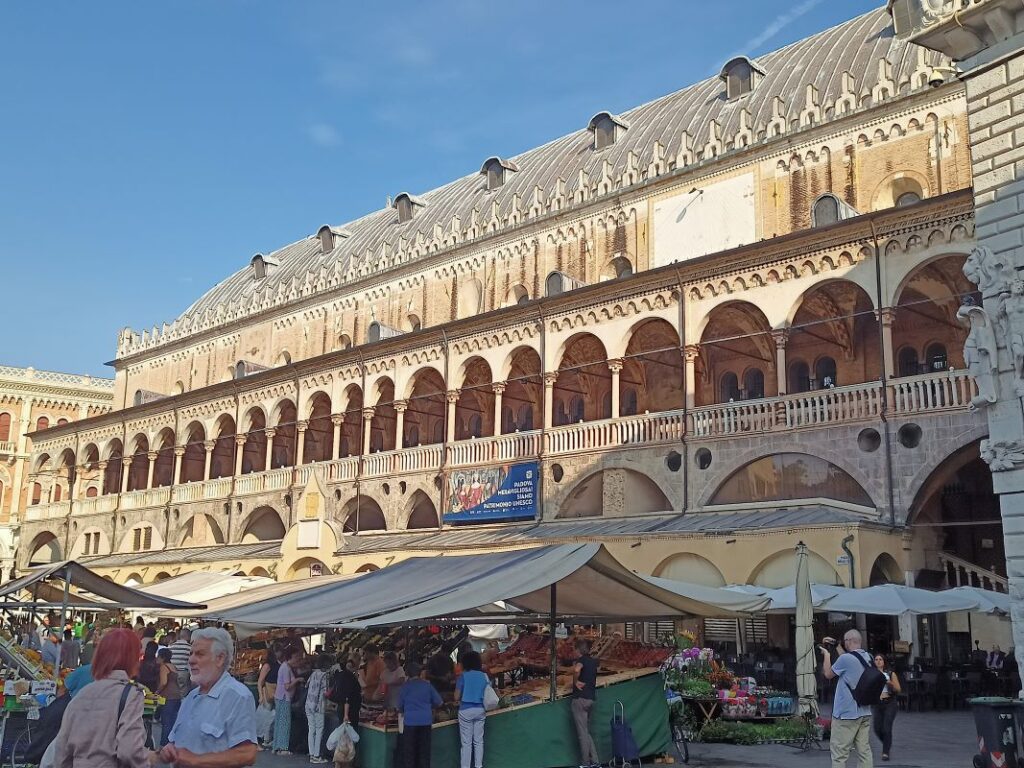
We have now been living abroad for nearly two years, enjoying our Later Gap adventures. While we have been to many places, we still have a long list of places that we “need” to see. We had just settled back into our weekly rhythm, my wonderful wife teaching school all day during the week, I hanging out at our agriturismo, looking at fields of ancient grains and olive trees whilst day-dreaming of pasta and wine, and sitting around in the evening talking about where we should go during the upcoming weekend. As you have probably guessed by now, our idea of long-distance planning for most of these adventures is getting it done sometime before Friday. Ideally, we would like to figure things out by maybe Wednesday, so we can watch something on YouTube to know what (not) to expect.
Choosing Our Destination
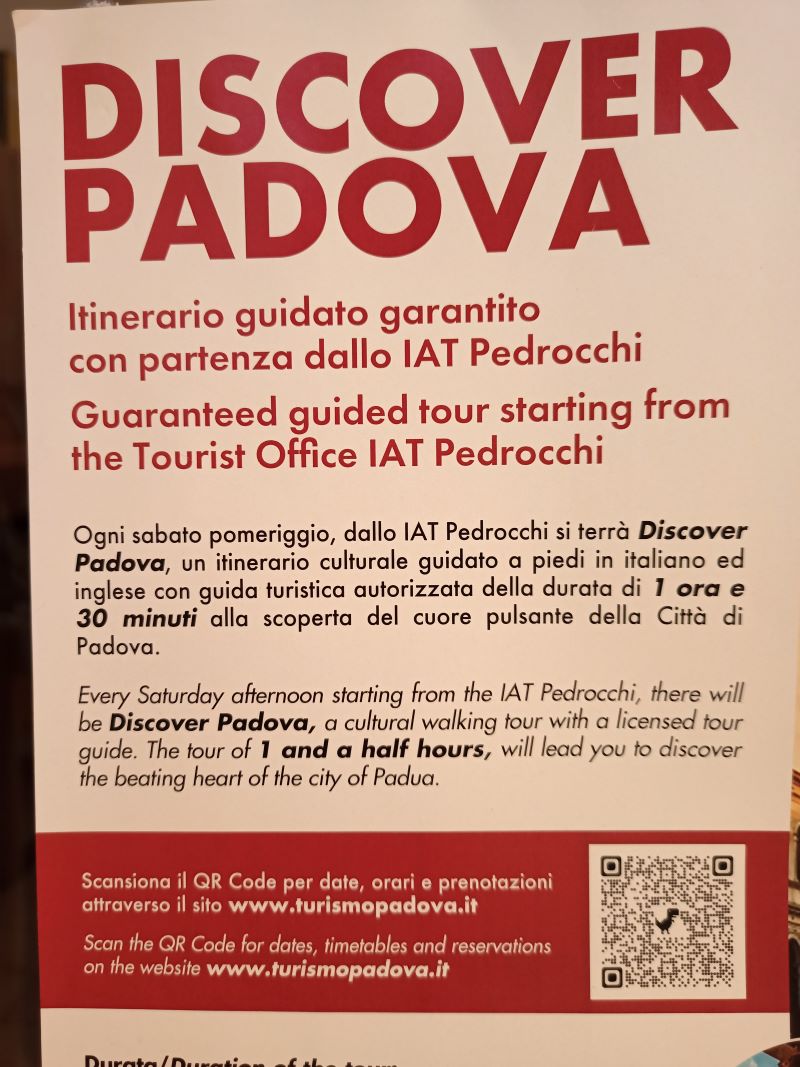
Coming into mid-week, we were down to three options – Terino in the northwest, Orvieto in the southeast, and Padua in the northeast. The weather was supposed to be iffy across Italy, so we wanted to keep our options open, a pretty good idea and a great option when you are a Later Gap Traveler. We watched a couple of short videos on each, and felt that we really couldn’t go wrong, no matter which direction we went – this is one of those times that we were right. On Thursday we made our decision – Padua (or Padova as it is called here and labeled on the map). Padua is located between Verona, Bologna, and Venice (better known – and a couple previously reported, see links). We looked at driving (in case we wanted to check out a winery in the area or stop somewhere along the way) but decided on our usual preferred mode of transportation (when staying in the city). We booked our train and our hotel – we were ready to go.
One other thing, that I have mentioned before, that we have incorporated into our journeys is booking a walking tour of the city for the first morning we are there – this gives us an overview of where things are and we usually see the big stuff and then know what we want to go back to. We looked at our usual, Get Your Guide, but lately, they seem to be offering more private tours – the bike, kayak, or special tours are still great there but the casual walking tours seem to have moved elsewhere. For Padua, my wife found a walking tour that fit our schedule on Guru Walks – they offer “free” tours with a local guide – you pay what you think at the end. We have done a few of these and they are usually a great way to hear about the city and are not a rip-off as the guides work pretty hard to try and get paid. We booked a tour, in English, for Saturday morning – we were ready to go. Our plan was to leave right after school on Friday and stay in the city through midday Sunday.
Getting There is Half the Adventure

Beware complacency. This is probably something everyone has heard, and most accept as pretty good advice. We agree, and try to follow this advice (usually). Another axiom is that no good adventure starts out and ends with “everything was well planned and went accordingly.” We got to the train station a little early. We needed to find a place to park – you can leave your car free at the station but need to find a place to park so you don’t get towed – as happened to our friends (adventure). After doing a few laps around the parking lot and nearby neighborhood, we decided to pull the car up onto the grass and park (people do, we just don’t know for how long). We still had a little time, so we sat outside the station and watched people leaving to see if someone vacated a spot.
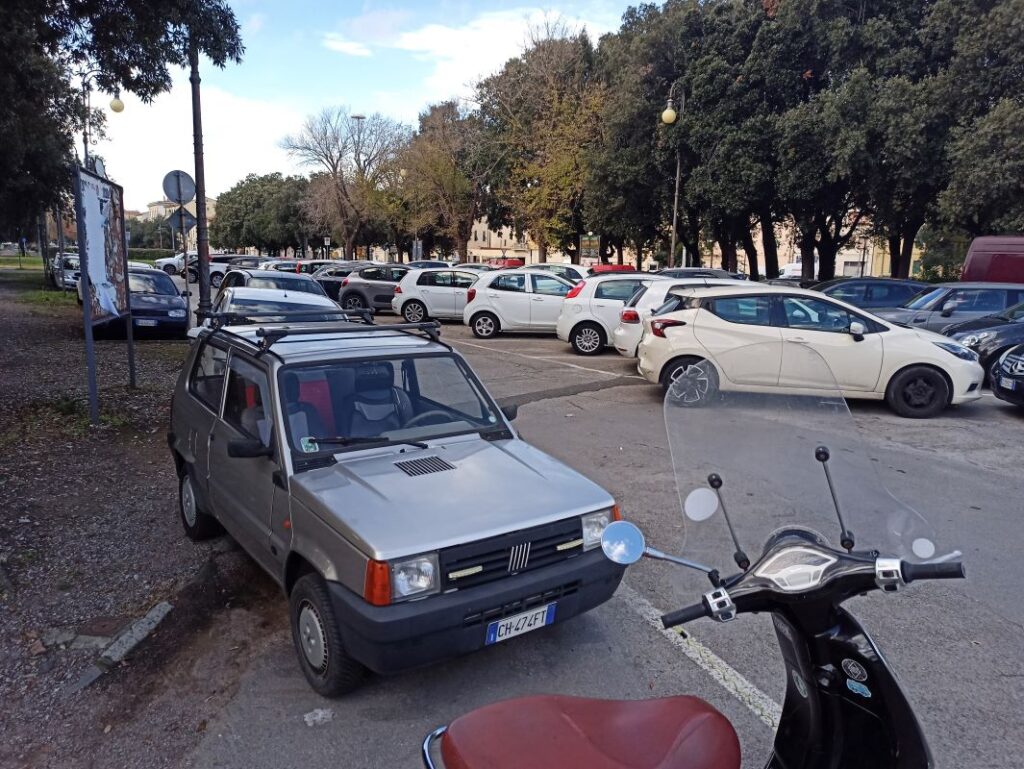
Eureka, someone moved. I left my wife with our backpacks, dashed across the park, jumped in our car, drove the wrong way around part of the roundabout, and pulled the car into the slot they had just left – success was sweet. I walked back, we picked up our luggage, and hopped on the train. I settled into my seat and started thinking about our upcoming adventure. I figured I would check the train tickets (I booked on the app on my phone) so I reached into my pocket.
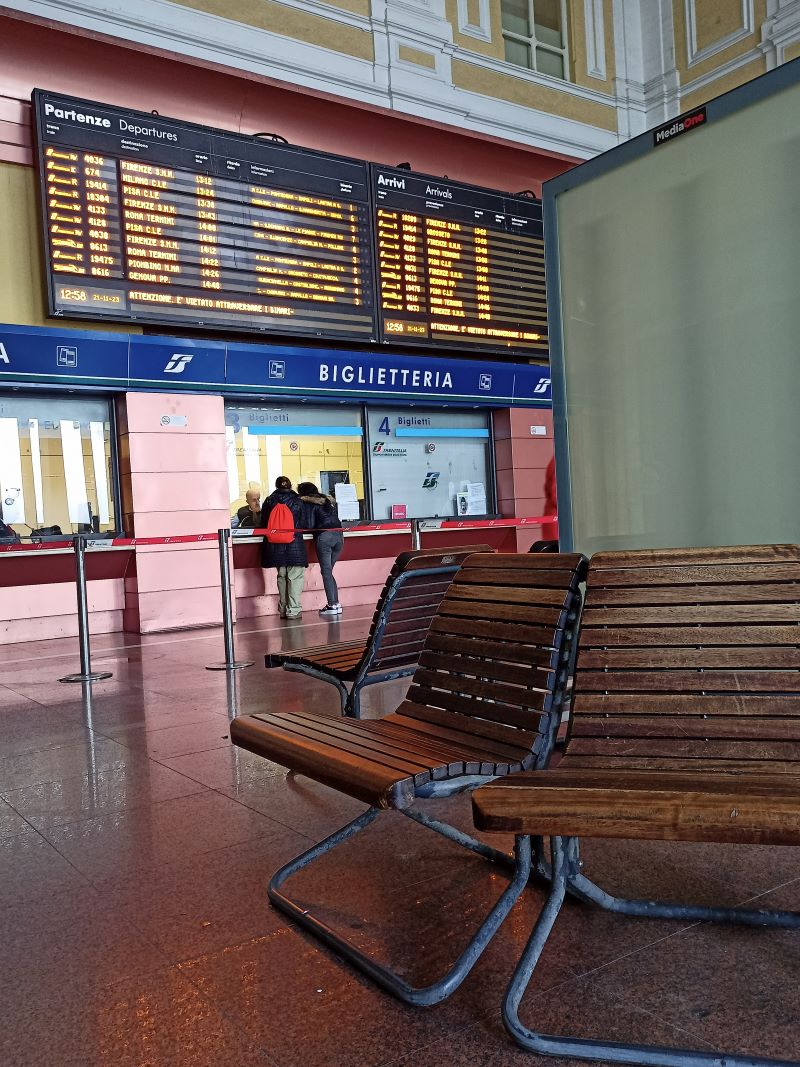
Oh-oh – no phone. I looked into the bag I brought with some snacks (and wine) – no phone. I looked into the pockets of my backpack – no phone. This was not good. I knew I had it when I parked, I had double-checked our train, and now it was nowhere to be found. I decided I better hop off the train to look. My wife decided to join me in my search (not my panic). I gathered our backpacks, and we got off the train.
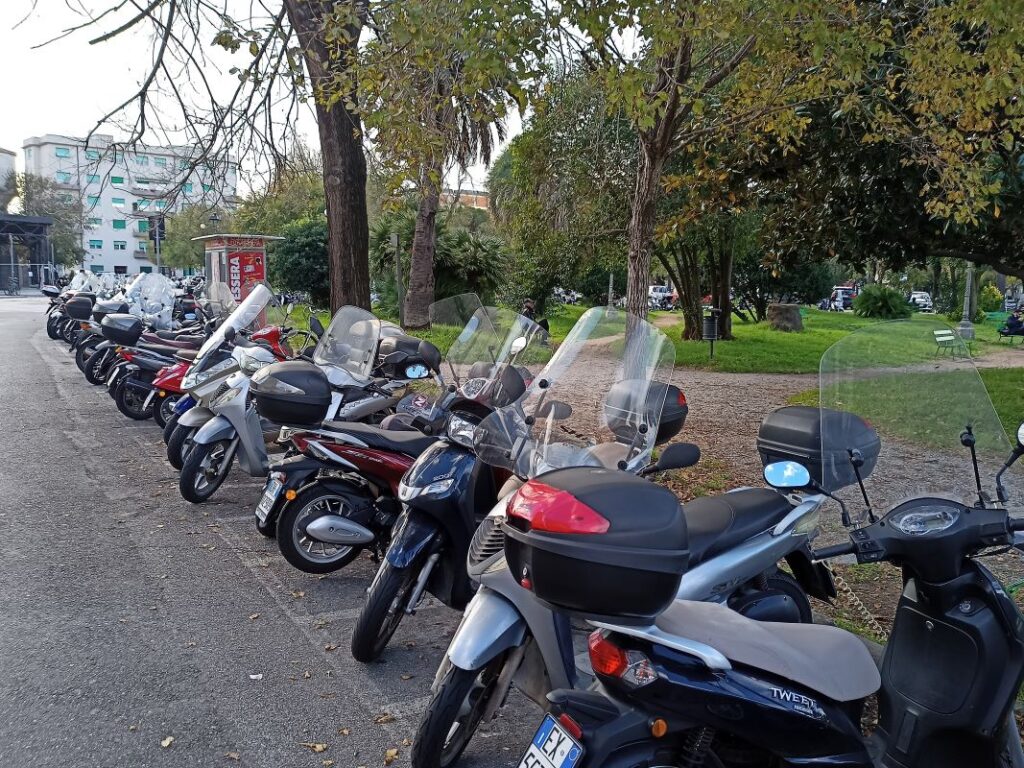
I left my wife and the luggage on the platform, and I took off running to try and figure out what I had done. I looked around the TV where they display the platform – nothing. I ran outside between the Vespas that were parked all around the park we had waited in – not there. I looked on and under the bench we had sat on – nope. I ran out to the car – there it was, lying on the driver’s seat, it must have fallen out of my pocket. I grabbed it and ran all the way back to the platform – the train had just left. I was sweating, my clothes were soaked, I only had a couple of outfits (life in a backpack), and our tickets were for the train that was just passing the end of the platform. So much for “everything went according to plan.” Oh well – that’s how adventures are made.
Better Late than Never
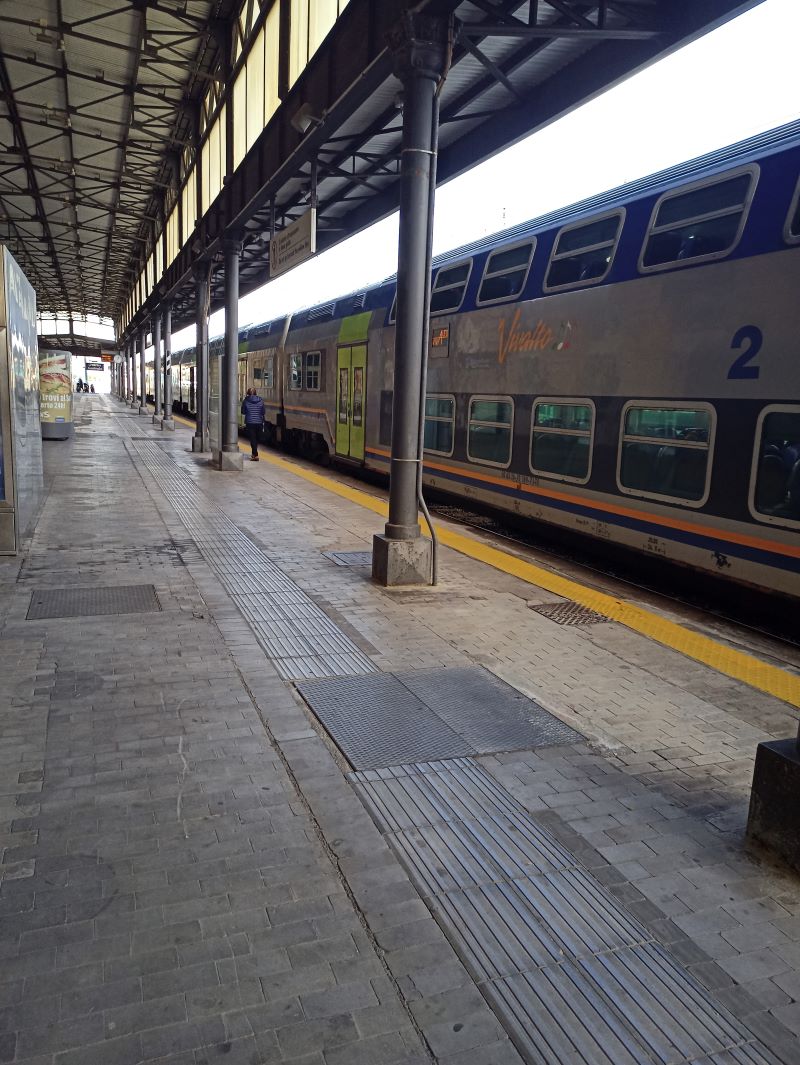
We hopped on the next train (an hour later) and changed trains in Florence (same train line – but an hour later). However, we had booked upgraded tickets with leather reclining seats – these were taken, and the train was full. We had heard before that train tickets work within + or – 2 hours, but those were regional train tickets – we weren’t on a regional. We were about to find out. We wandered through the cars until we found two seats near each other and sat down. We figured we might as well make the best of it, so we sat back and opened our wine and grapes to enjoy the ride. Twenty minutes before arrival, the ticket checker came through. He scanned our tickets, looked at us quizzically, and then notified us that we were in the wrong seats, in the wrong car, on the wrong train. I said yes, but we had missed our connection in Florence. He apologized and said that when we got off in Padua, we could go to the ticket office and get a refund since we were going to be over an hour late. I think he meant, “If I hadn’t screwed up and the train was late, we were eligible for a refund” – I don’t think he meant, “Since I was a clown and had dropped my phone resulting in having to go find it and miss my scheduled train, I was entitled to money back.” When we arrived, we bypassed the ticket office and hustled to our hotel.
Our time in Padua was lovely – the first night we were there (after the travel debacle), we went to a little local restaurant. The streets were almost devoid of cars – a couple of areas where traffic flowed, but most of the streets were filled with pedestrians and bikes. An occasional car would pass, but they drove slowly, pausing for people and bikes to get out of the way and no one seemed to be in any huge hurry. We ate outside and continued to be amazed at the number of bicycles going by. All makes and models, some young and others old, some in great shape and others looking a bit used – I am talking about both bicycles and riders.
Starting Our Tour
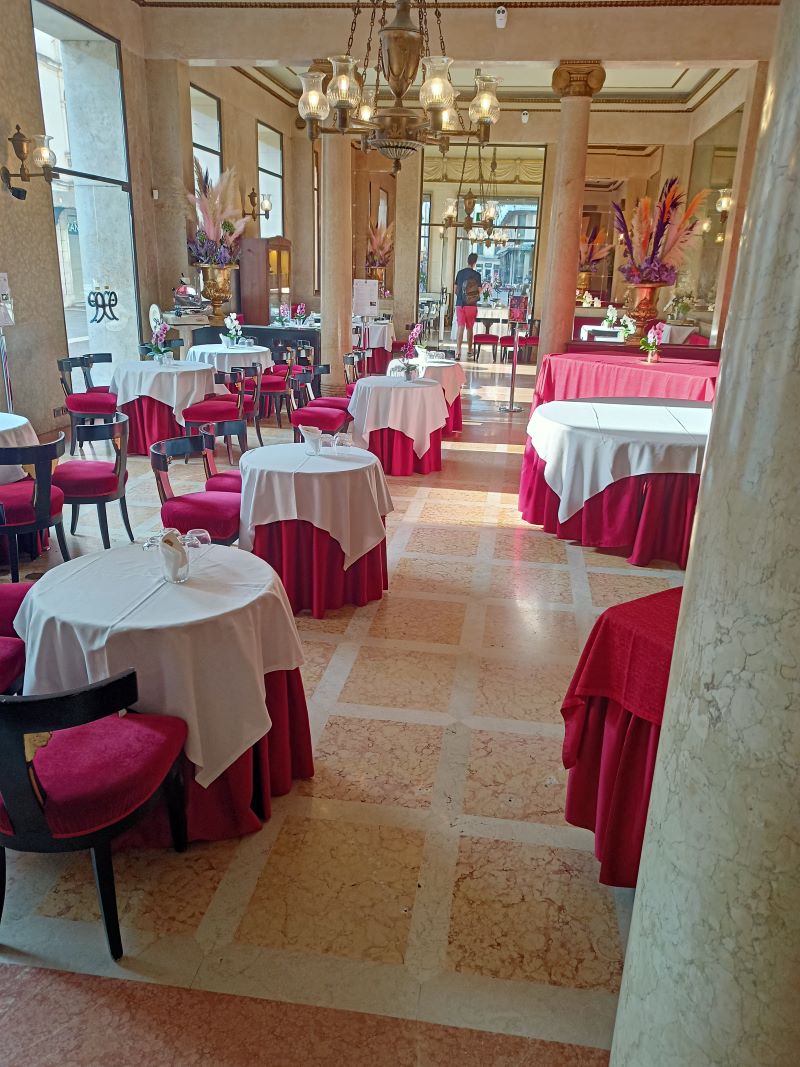
Saturday, we met our guide for the tour. He had messaged us twice – and had started a group chat with the other members of our scheduled group. We met in front of the Prada store in the heart of Old Town. The first thing we noticed is that there is a lot of high-end shopping to be had in Padua. Right next to Prada is Spada (from Roma, specializing in Italian men’s wear) which abuts Geox (a rather nice Italian sports shoe store) which is next to Gucci and across from Lois Vuitton. Maybe someday – but not today.
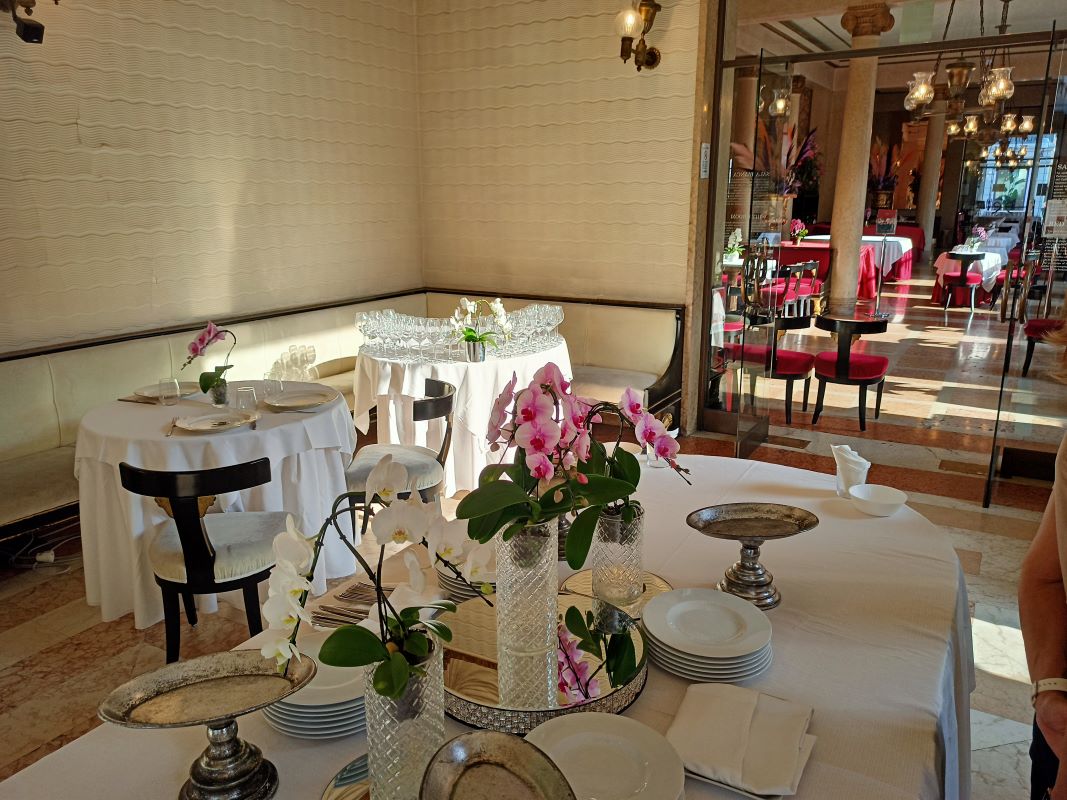
Our first stop on the tour was at Caffé Pedrocchi (Il Caffe sena Porta – the Café without Doors) – the first “open” café in the area. The café dates to the early 1800’s, when coffee was for rich folks. The founder of the café recognized there was a bigger market, poor people like coffee too, and they had some money to spend – call this the precursor of Sam Walton. He included three rooms – the Red Room (for the rich and well-off), the Green Room (for the poor), and the White Room (for women).

In the Red Room, waiters served the patrons using fine silver on linen cloths. There was a similar service in the White Room, so named because women were pure and unsullied by commerce and business dealings. However, in the Green Room, everyone was welcome and could stay as long as they wanted, even without ordering, but all customers served themselves. Students (the West’s 2nd oldest university is nearby) would hang out for all hours (to study, stay warm in the winter, and cool and dry in the summer). This room has given way to an Italian expression – “essere al verde” (“to be green” which means “to be broke”). These three rooms still exist today and operate the same as they did two centuries ago.
Università degli Studi di Padova
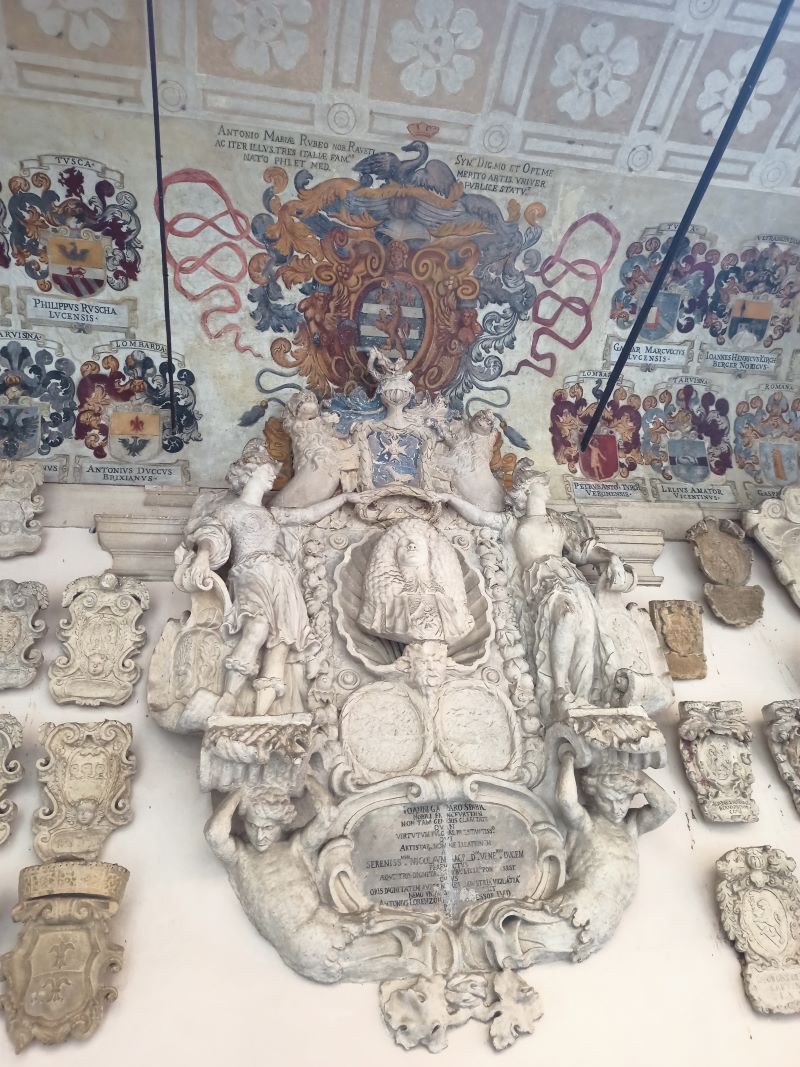
We next stopped at the University – established in 1222 by “visiting” professors from Bologna (the oldest university and mentioned in my Bologna blog). The professors were “elected” by the students, imagine allowing students to pick who would or could be a professor. Eventually, the school grew and was welcoming students from across Europe, so the powers that ruled the city (Venice in the day) started appointing the professors – they needed to make sure the right message was getting out. All students who attended the university had a memento made in their honor, not necessarily graduated – as long as they paid. The initial students had frescos painted, later students had a stone plaque. The bigger the plaque, the richer the family. The largest plaque (pictured) was from a Venetian, the son of a very rich family, who spent 10 years doing victory laps and never graduated – he was known to throw a great party. The practice of contributing a stone plaque eventually stopped – the university claimed it was a weight issue, the walls could no longer support so many plaques.
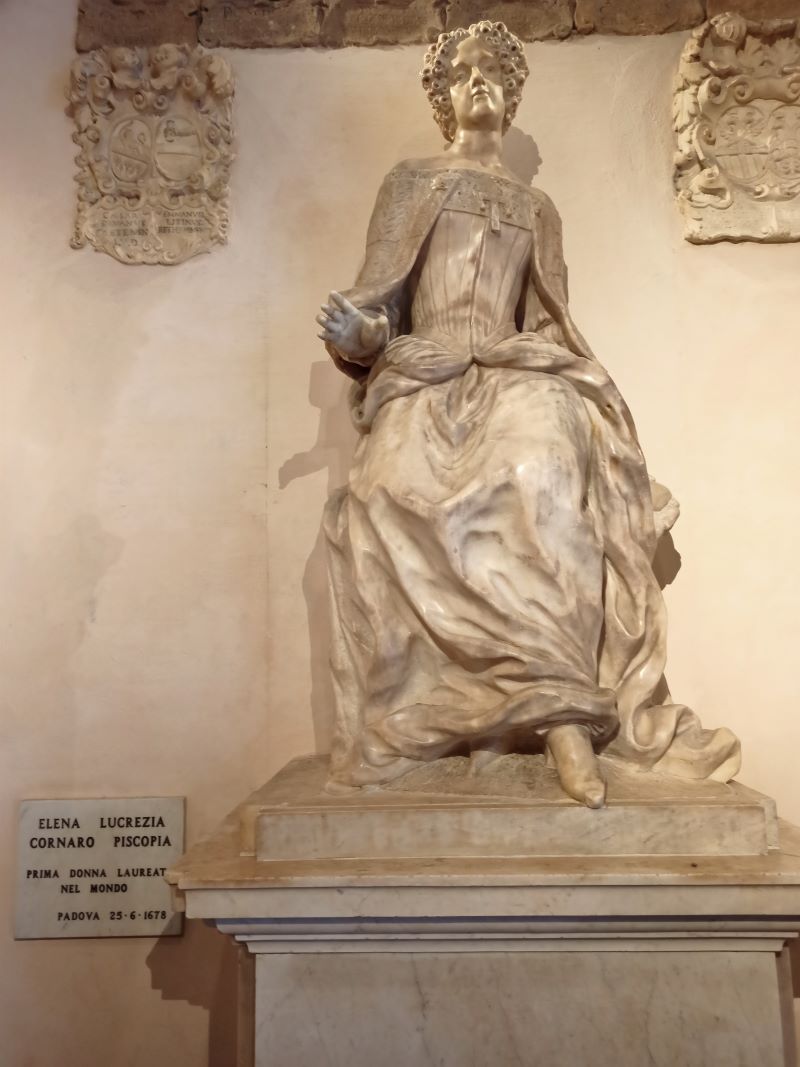
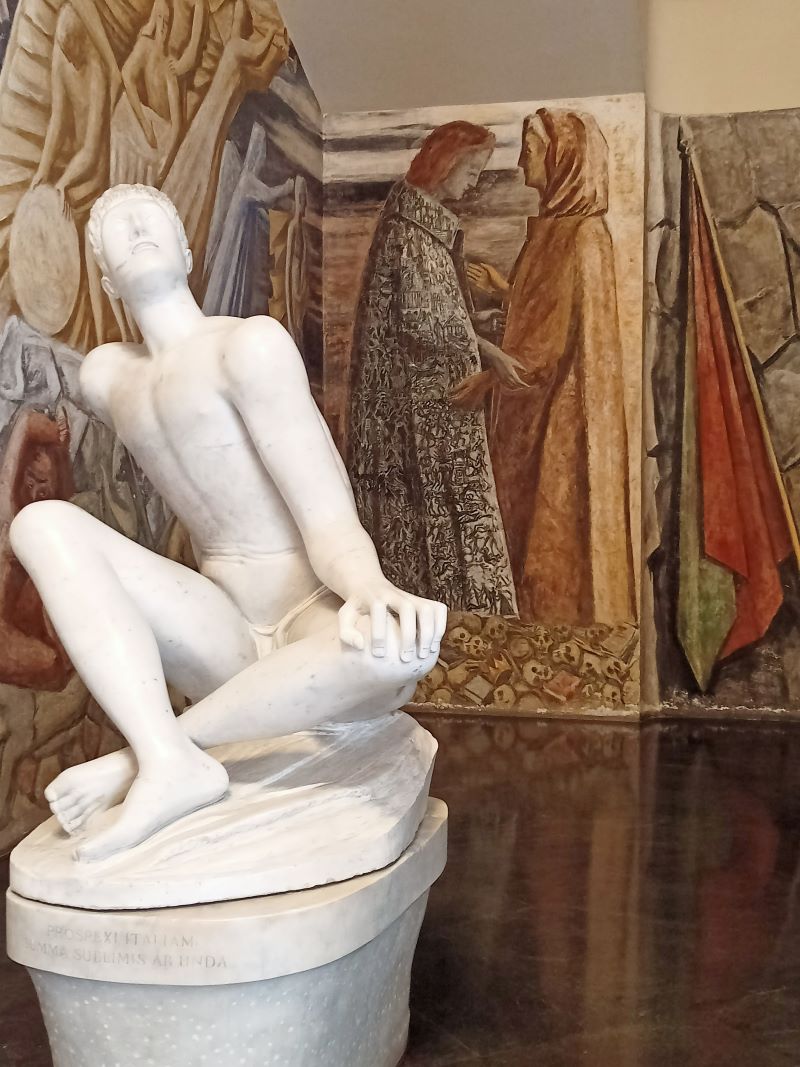
A couple of other interesting University anecdotes – the current main “University” building was actually designed and remodeled after World War II, incorporating many of the earlier classrooms (bringing some together, from being scattered across the town). The main entry hall was designed by students, honoring their classmates who had fought as partisans during WWII – many having lost their lives (on the left). The school was originally divided into two parts – law and everything else. Everything else included medicine, theology, and philosophy. Philosophy included all other sciences and Galileo taught philosophy at Padua (in the form of astronomy and physics) for over 15 years. And Padua University was a true leader in education – it was the first university to graduate a woman – Elena Lucrezia from Venice (pictured on the right). She was an extremely educated (basically self-taught) young woman who pushed to be allowed to present and defend a thesis – initially turned down but subsequently allowed – and she passed with flying colors. She will also be breaking new ground in 2024 in Padua’s Prato della Valle, a large public square (without grass). The “square” (it’s actually an oval) is surrounded by 87 statues of historic Padua residents; Elena’s will be the first statue of a woman.
Markets & City Lore
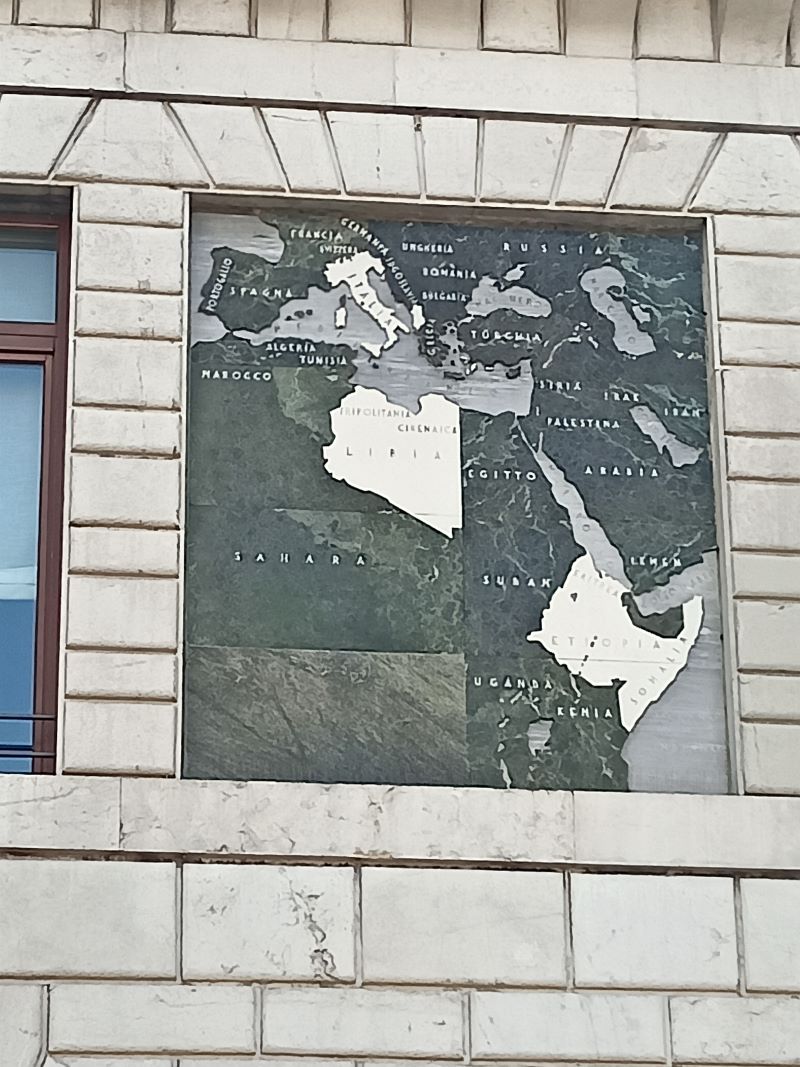
Moving on from the university, we encountered the Erbe Market (Piazza delle Erbe) – the vegetable market outside the 800-year-old Palace of Justice. The building no longer serves as a prison – it now hosts small meat and cheese shops and bars or coffee shops, some of which have been operating in the same family for upward of 200 years – in the U.S., we think if a family business is still running 50 years on, it is long-standing. Another side of the Erbe market was a wall depicting an earlier version of what we now call “fake news.” Some of the large murals on the wall depicted maps of the area around the Mediterranean and across Europe. These maps “depicted” the areas Italy “controlled” in World War II. From a historical perspective, the areas were a bit excessive – by looking at the wall, one would have thought Italy (and the Axis powers) owned most of Europe and Northern Africa. It was an attempt (albeit failed) to rally the people to gain support for a very unpopular position that leadership had taken – sounds like what we see today (depending on which channel you turn to.)

Leaving the Erbe Market, we traveled through an alleyway called “Liars Avenue” to a clothes market in the adjoining piazza. On the wall were manacles, where merchants who were caught cheating customers were chained. People could then go to the Erbe market, pick up the rotten and spoiled fruit and vegetables, and engage in a little target practice, at the cheater’s expense. Right across from the manacles were etched the actual measures, lengths, widths, volumes, etc., that were supposed to be used in transactions. The dishonest merchant would be able to look at and ponder these legal measures while getting pelted by angry or disgruntled customers. The practice probably provided a way to help Erbe market vendors get rid of their rotten or leftover wares – today that job is done by a large conveyor belt. The city has installed large dumpster-like bins at one end of the market – these are opened up during the day so people can dump their trash. This falls onto a belt that runs under the city and takes the garbage to a local processing area for disposal. The idea is way cool – and this keeps the city very clean.
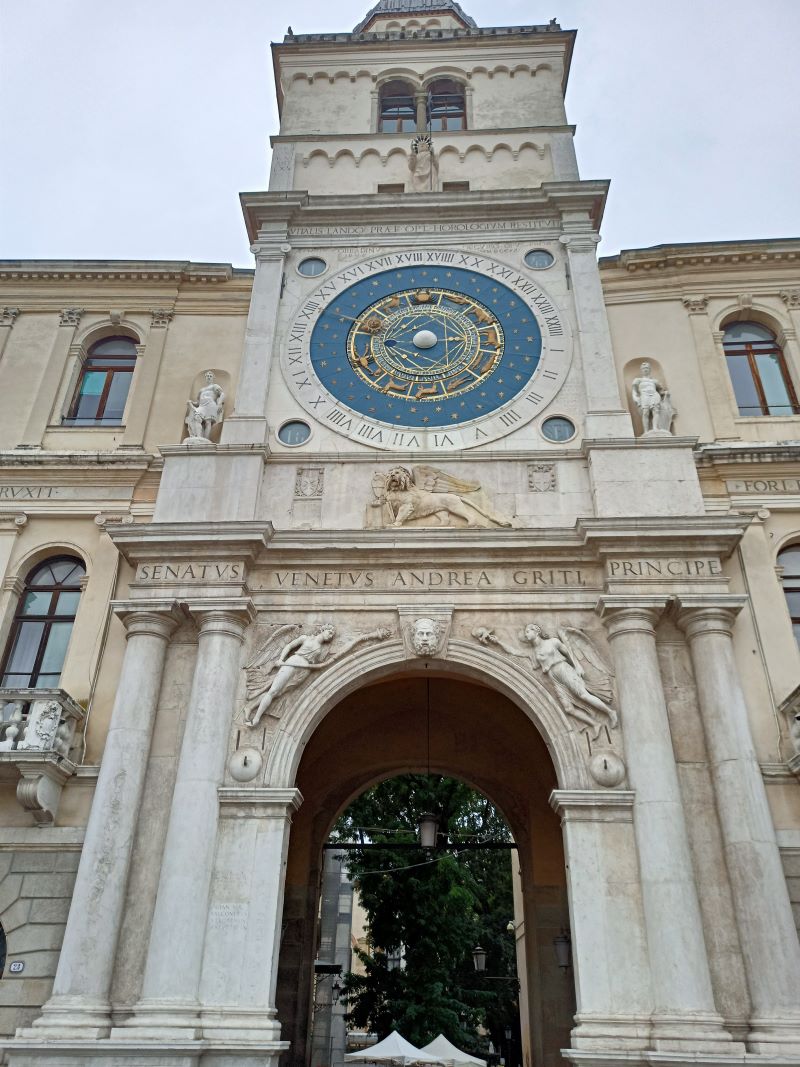
At the end of the clothes market piazza is a large Astrological Clock – it shows the time, the seasons, the phases of the moon, and 11 of the 12 signs of the Zodiac. The story has it that the architect and engineer who was commissioned to build it was cheated in payment. Angry, he decided to take his revenge on the patron who commissioned the work – who was a Libra. On the clock, the Scales are missing, and the Scorpion is rather large (it had to be extended to cover up for dropping Libra). As we were talking about this, the tour guide offered one more bit of lore from the area. Current legend has it that whenever someone eats a pizza with ham and pineapple, an Italian dies.
The Ghetto – Where the Money Is
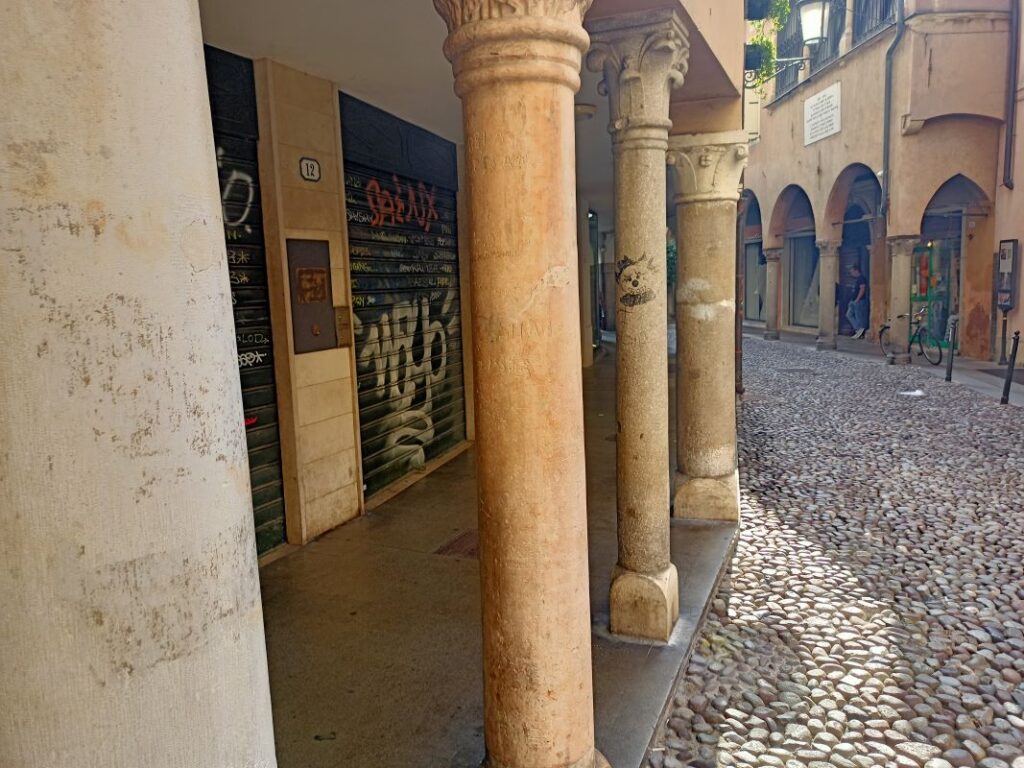
Leaving the markets, we made our way into the Jewish Ghetto. Most Italian cities have one, Padua is no different. Italy as a country was formed by the assimilation of many smaller separate city-states, each of which was composed of smaller walled towns. Rulers, either of the city-states or towns, wanted Jewish merchants in their cities, but contained in a small section. So, these merchants were granted a little section to live in, and since they couldn’t spread out (like the rest of the citizens – moving to the suburbs and becoming soccer parents), they built up. The tallest buildings in many of the cities, besides the towers that signified wealth and power, were the Jews’ houses, where a new floor was built to accept a new generation in the family. This was the only area in Padua that had the original cobblestone streets – really cool but tough on bikes. Also, this area provided a historical view of repurposing and recycling. The porches and porticos were lined with mismatched and cracked pillars. When we asked why nothing matched (kind of like a blue sock and a brown one) the guide stated that to build their houses and the porches, the residents had salvaged whatever was being torn down and used it to prop up their buildings. It must work because many are a few hundred years old, and still standing. Again, we think a 75-year-old house is historic, this was repurposing something from 1000-2000 years ago into something that was only 500, and it is just a part of everyday life.
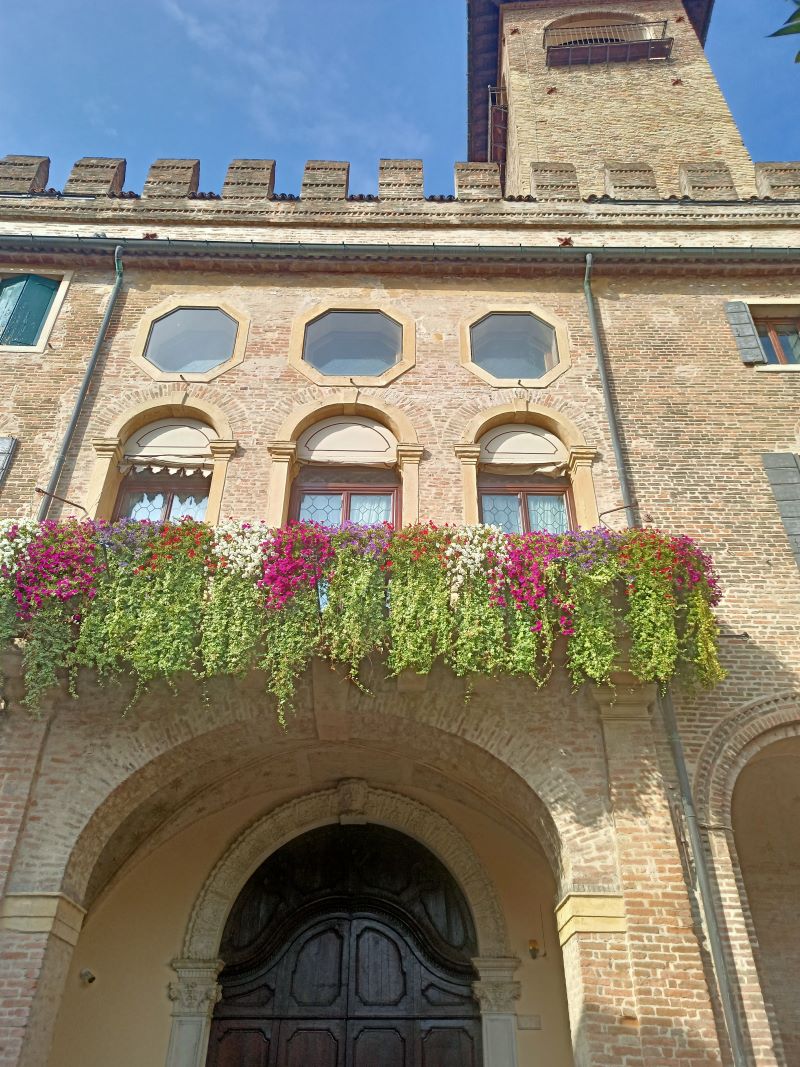
As we continued our tour and stroll, our guide stopped and pointed out a balcony, on the side of what appeared to be a rather nicely upkept palazzo, that was overflowing with flowers. He told us that the city of Padua sponsors a monthly “balcony contest”, where they judge whose is the nicest, and this particular one usually wins. The owners always keep it trimmed and growing, and they change the colors of the blooms every two weeks. He noted the “apartment” is owned by the individual who started and owns Geox (an Italian shoe company – I know because my wife likes their products and we had visited the store and bought some socks prior to our tour). I think he is doing well, and we were happy to help.
The Basilica – Ugh, a Tongue
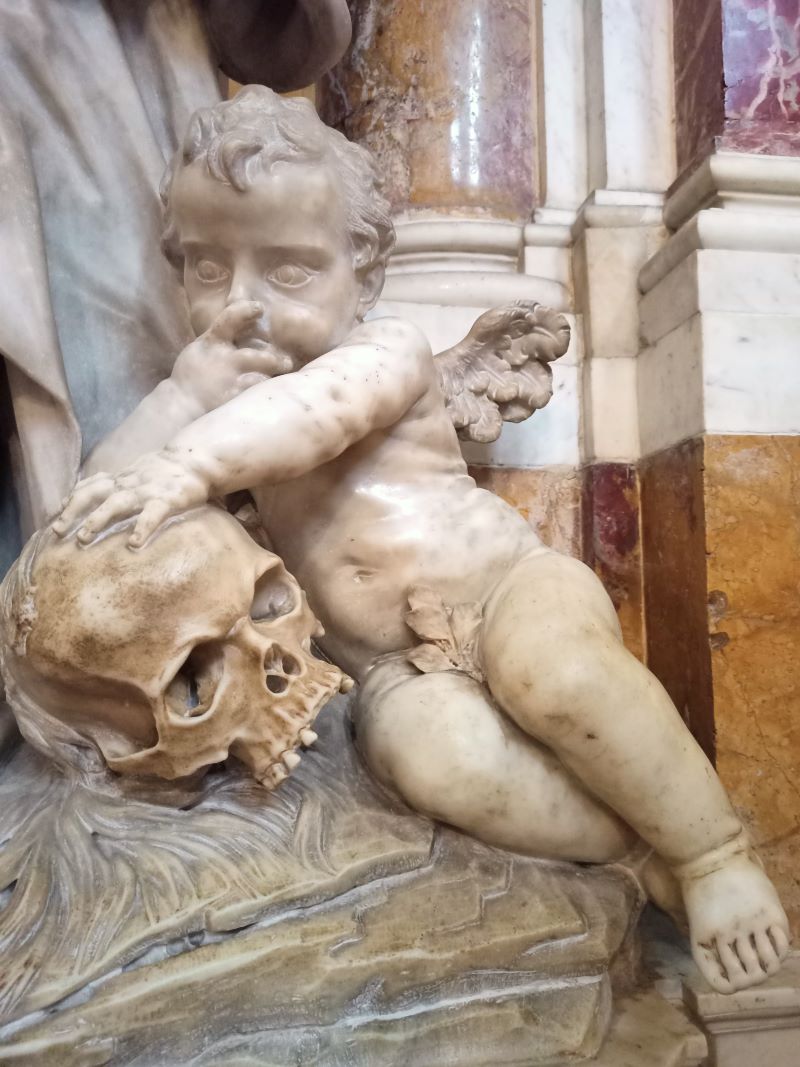

We ended our tour at La Basilica di Sant’Antonio di Padova (The Basilica of Saint Anthony), dedicated to the patron saint of the city. The building is impressive, adorned with frescos both inside and out. The ceiling is painted like a night sky, dotted with tiny silver stars. There is a shrine to Saint Anthony at one end of the building, filled with artifacts. One of the first things you see when entering is the robe he was wearing when he was killed. The story is that he was killed by the Church for being a tad too vocal in his support for the poor and downtrodden. Also displayed is his pillow – it was a rock. And in the position of prominence, at the end of the chapel, where we had to wait in line to pass by, were his perfectly preserved tongue and teeth. His tongue is even plated in gold. It’s kind of an eerie sight, but also lends credence to why he might have been killed, but also venerated.
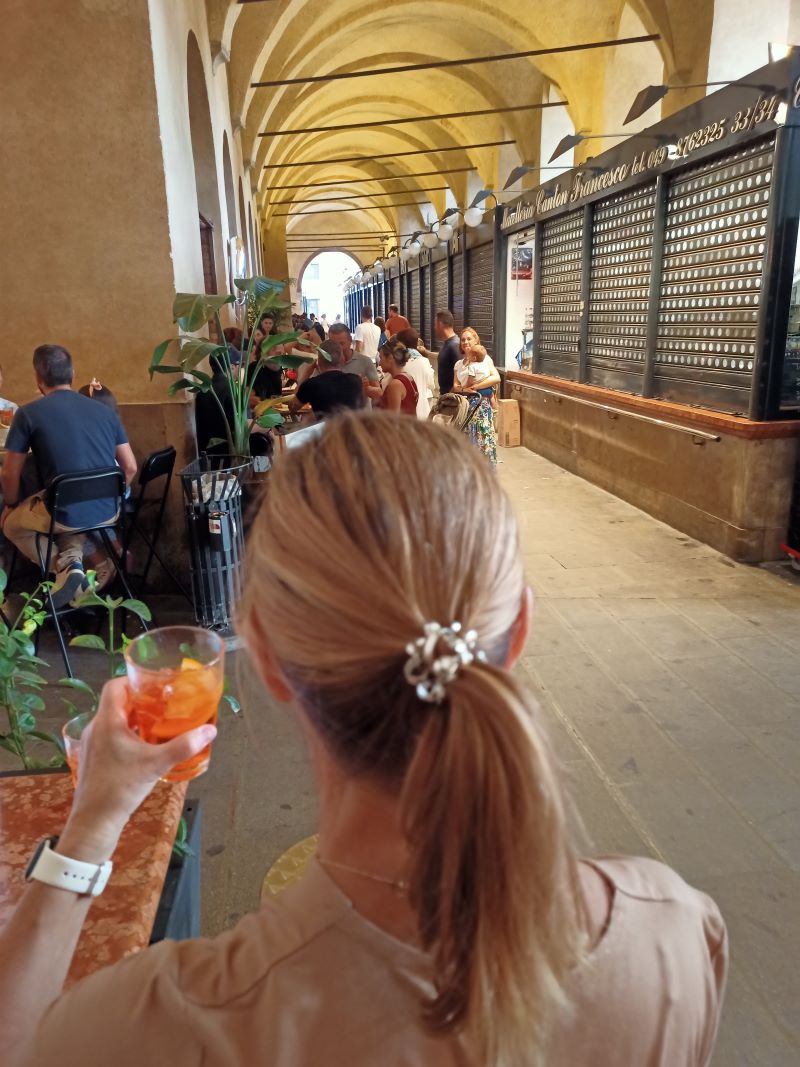
We finished the tour with our final usual question – where are good places to eat? Armed with the names of three restaurants, recommended by a local and not TripAdvisor or Yelp (which are pretty good starting points if you don’t have anything else), we set off to find lunch and go back to explore a couple of corners of the Old Town that we had passed through rather quickly. Walking the back alleys, stopping at little cafes and bars, ordering a glass of wine, and sitting down to watch Italian life stroll by – another amazing weekend. We ate lunch at one of the places suggested (Sugo Pd, pick your pasta and sauce, popular with students – very good) and made reservations at another (A Banda del Buso, another score). Although it is not one of the main cities on an Italy tourist itinerary, for us it provided another reminder of why we are here – and loving it.
So much to see, so much to do, and so much to learn. These tours and walks around some of the lesser-known areas are what make being a Later Gap Traveler so rewarding. Getting to live abroad, at a time and place in life where we have the time to slow down and really enjoy the local stories and culture, is satisfying on many levels. Someday, this too shall pass. But while we have the time, and the opportunity, we look forward to continuing this adventure.
